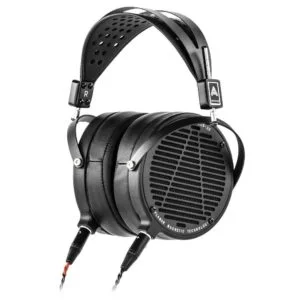Moving from the Astell & Kern AK100 to Astell & Kern AK120 music players, A&K decided to provide a Dual DAC setup to create better left and right channel separation with clearer sound quality. They thought that the Dual DAC setup would be enough, but while developing the Astell & Kern AK240, they felt the need to further improve sound quality in order to accurately reproduce the original sound recording. After countless hours of research and testing, they were able to find the answer.
The answer was to create both a balanced output and native DSD playback through the Dual DAC setup.
Now with the Astell & Kern AK240, we can dare say that we have gotten “that much closer” to the sound quality of the original recording.
Native DSD Support
DSD (Direct Stream Digital) is a digital audio file format originally developed for SACDs (Super Audio CD). Regular digital audio file formats such as PCM (Pulse Code Modulation) is separated into 65,000(16bit) to 16,700,000(24bit) of information on the Y axis, and 44,100(44.1kHz) to 192,000(192kHz) across the X axis for digital signals. DSD files have 1bit (0s or 1s) for Y axis and is separated into 2,800,000(2.8MHz) to 5,600,000(5.6MHz) of information for X axis.
Compared to regular audio CDs with 16bit/44.1kHz PCM format, SACD’s recording frequency goes up to 100kHz and the dynamic range goes beyond 120dB while maintaining sound clarity during the transmission.
One of the approaches they decided that would help them move a step closer to the original sound quality was to provide native DSD playback without having to convert it into PCM. This was indeed a difficult task. In order to provide native DSD playback on the Astell & Kern AK240, they had to select a different DAC chipset. Making the decision to change the DAC was not easy, but in order to reach our goal, they had to make a bold move which was to start from scratch.
A&K have asked themselves: Does the DAC support Native DSD?
Will it allow for the Dual DAC setup? What else is needed for the perfect Native DSD support?
In order to answer these three questions, they have decided to use the Cirrus Logic CS4398 chip in the Dual DAC setup with an added exclusive XMOS chip that will allow for Native DSD support.
The process of setting up Native DSD support was not an easy task. Since the main CPU does not process Native DSD, they needed a chip that will work with it. It took them a long time, but they made it work. Through countless hours of testing, they were able to achieve Native DSD playback by having the main CPU process the data, send it to the exclusive XMOS chip, then through the DAC to deliver the sound.
Dual DAC meets Balanced Output
It did not take them long to figure out that the Astell & Kern AK240’s Dual DAC and balanced output resulted in the best sound. During the development of the Astell & Kern AK100 and Astell & Kern AK120, Astell&Kern’s specific analogue amp setup was already creating full balanced analogue signals streaming from the DAC and they were able to move a step closer towards the original sound by then creating a balanced output terminal at the end.
256GB of Massive Storage
Astell&Kern has created the Astell & Kern AK120 Titan with a storage capacity of 128GB, but in order to support Native DSD, MQS, and massive audio files, they had to come up with the ultimate portable music player with 256GB of storage. With 256GB of internal memory, about 2,500 MQS (24bit/96kHz, 4 minute-long, 90MB) songs can be saved. With the addition of a 128GB microSD card, the AK240 can support up to a total memory capacity of 384GB.










Reviews
There are no reviews yet.